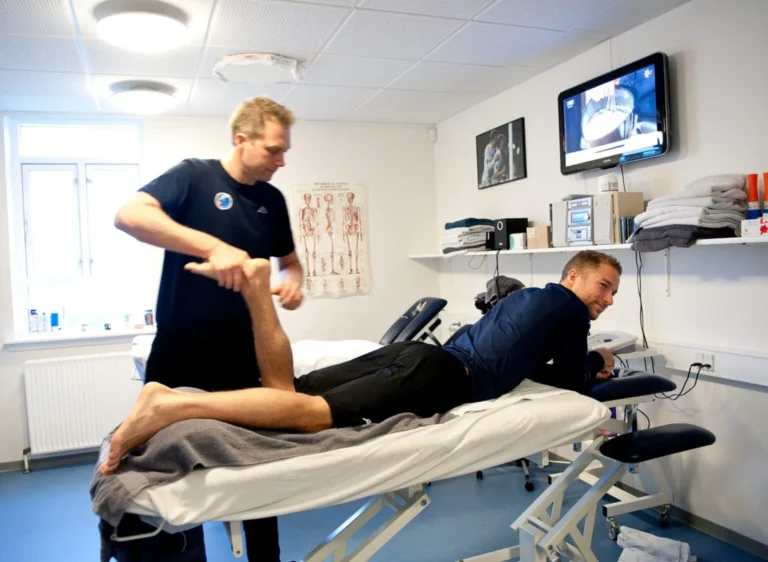How to avoid overtraining?
Everyone has probably heard that endurance athletes are at risk of overtraining. But what exactly is it, how do you recognize it, and can it be avoided?
Overtraining is actually a normal response to training load. In training, we deliberately overload our bodies to trigger an adaptive response that leads to improved fitness during the recovery phase. However, if the load is too much or if we neglect proper rest, true overtraining can occur.
How does overtraining manifest?
Overtraining is defined as a decrease in athletic performance of at least 5%, lasting more than two weeks, at a time when performance should be improving or at least maintained, even after rest (or tapering). Overtrained athletes feel like they can no longer train as they used to; everything feels exhausting.
One crucial but lesser-known fact is that overtraining includes mood disturbances. Up to 80% of overtrained athletes suffer from depressive disorders. This means they are chronically in a bad mood, nothing cheers them up, they feel emotionally numb, tearful, or apathetic, useless, hopeless, experience sleep disturbances, lose appetite and interest in sex, and none of this improves even with rest.
Physiologically, overtraining can lead to increased resting heart rate and blood pressure, muscle soreness, digestive issues, fatigue fractures, and impaired immunity (frequent illness, common colds, slow healing, etc.).
Research suggests that at least 30% of endurance athletes (including non-elite ones!) have experienced overtraining, with many facing it repeatedly throughout their careers. About 10% of athletes in various training groups are affected at any given time.
Also Read: Setting SMART goals for the summer training season
Not just about training volume
Recent studies suggest that physical overload (e.g., kilometers logged) is not the sole cause of overtraining. Psychological factors like chronic stress, poor relationships, or personal life worries can have a significant impact. Even a recreational athlete training only three times a week can become overtrained if they lack recovery time and face a lot of work stress. Other risk factors include poor nutrition and hydration, or resuming training too quickly after illness or injury.
We don’t know how to rest
If an athlete becomes overtrained, performance will stagnate or decline, and depressive symptoms may worsen, until proper rest is taken. For some, this means two weeks of light cross-training; for others, it may require six months of complete rest and professional help for depression.
Many elite or competitive athletes feel they can’t afford rest due to commitments to a team or school (or because their coach won’t allow it), and some end their careers due to immune disorders, chronic injuries, emotional burnout, or lost motivation. Even recreational athletes often struggle to rest, whether due to high ambitions or a psychological dependency on sport.
Read More – Train smarter, not harder: How to optimize your ski training
How can you detect overtraining?
The only real strategy is prevention. But how do you do that?
In reality, very few people systematically track their resting heart rate (especially if you’re jolted awake by an alarm clock or children). There’s no reliable or readily available lab test. The only consistent indicator you can monitor is mood changes in response to training.
A typical reaction to heavy training is a drop in mood, and a normal response to rest is mood improvement. If your mood doesn’t improve after rest, overtraining could be the cause.
One study’s approach
One study monitored elite swimmers, where overtraining is considered “normal.” Throughout a season, they filled out a mood questionnaire before every practice (tracking tension, depression, anger, fatigue, confusion, and vitality). Their individual baseline was established at the start of the season.
If their mood was 10% better than normal, coaches increased the training load. If their mood was 50% worse, the load was reduced. Coaches checked for abuse of the system but found it worked: 64% of swimmers had training loads reduced at some point, and 57% had them increased.
Swimmers (and coaches) learned to assess their mental state before training and adjust accordingly, and in that season, no one got overtrained.
Tune into your mind
The key to preventing overtraining is learning to assess your current psychological state and adjust training accordingly – yes, it’s that simple. But who actually does this? How many coaches ask their athletes how they really feel, believe them, and adjust training? How many recreational athletes cut a session short after a hellish week and are feeling drained?
Why have we learned not to trust our feelings? Why do we often attribute feeling bad before a session to laziness?
Try it yourself
If you’re up for an experiment, aiming for a happier, healthier, more motivated, injury-free, and overtraining-free season, start by creating your own simple mood tracking questionnaire—nothing complex: just six lines (feel free to adapt the feelings to suit your experience). Before every workout, mark how you feel and total the points. After some time, you’ll know your “normal” score. If you stray significantly, up or down, adjust your training.
How do I feel before today’s workout?
- Relaxed – 1 2 3 4 5 – Tense
- Happy – 1 2 3 4 5 – Depressed
- Calm – 1 2 3 4 5 – Angry/Frustrated
- Rested – 1 2 3 4 5 – Tired
- Focused – 1 2 3 4 5 – Confused/Distracted
- Enthusiastic – 1 2 3 4 5 – Low energy
- Total: ___
Trust yourself. In time, you’ll learn to distinguish the essential feelings from the fleeting ones. And perhaps, during a long ride, you’ll calmly reflect on what needs to change in your life so you can feel better and handle more.
This article was updated. It was originally published on Bezky.net on June 3, 2019.
Also Read – Threshold training explained: The science behind ski endurance
Are you interested in training for long-distance and traditional cross-country skiing? Click HERE and read more about it.










